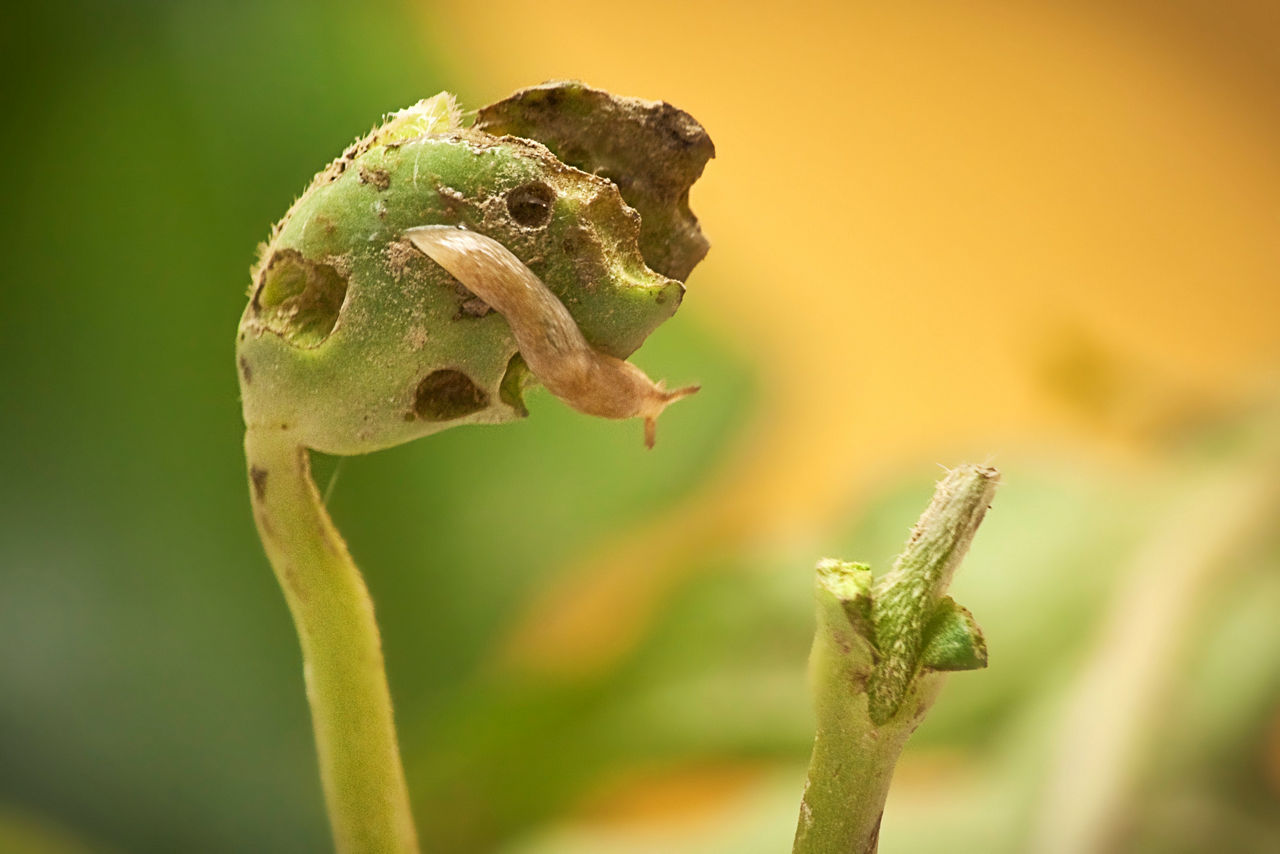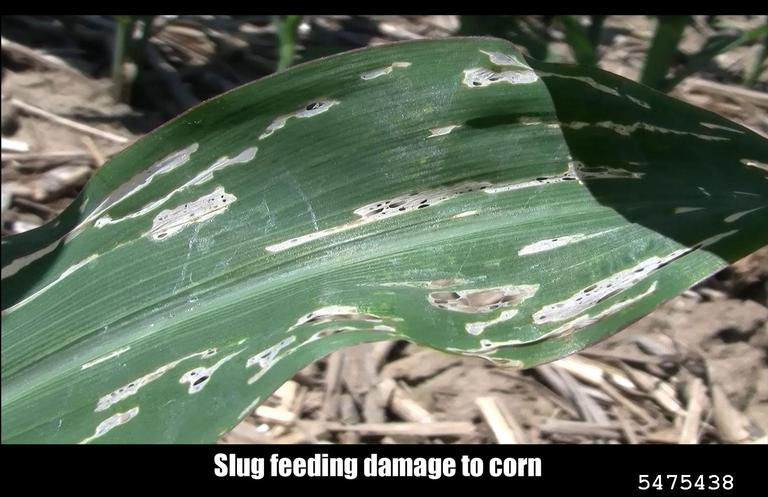3 MIN READ
Slug Damage in Corn
April 14, 2020
Reports of slug injury to corn have increased in recent years and with the relatively mild winter most of the Corn Belt experienced, the growing season of 2020 may result in more reports. The three major species of slugs that can be found associated with corn and soybean in the Midwest are the gray garden slug (Figure 1), the marsh slug, and the dusky slug. In the mid-Atlantic states, there is an additional species, the banded slug. However, the gray garden slug is the most common damaging species to corn and soybean across the country. The gray garden slug produces a white, sticky mucous when disturbed, which can be used as a diagnostic characteristic.

What is the life cycle of slugs?2
Slugs have three growth stages, egg, juvenile, and adult. Slug eggs are small, gelatinous, oval-shaped, and are usually found on crop residue or in the soil. Egg hatch usually occurs in early spring, with juveniles resembling adults but smaller. The juveniles reach maturity in the late summer to early fall, mate, and lay eggs. The lifespan of the grey garden slug is about 12 months, with a generation time of about 6 months.
Where can slugs be a concern?
The majority of reports of injury come from no-till or reduced-till cropping systems. These systems provide slugs with an excellent environment by maintaining crop residue to retain moisture and provide shelter, particularly under cool and wet conditions in the spring. Reports from the mid-Atlantic states indicate that about 20% of the no-till fields suffer economic losses and 47% of growers indicate that significant slug damage occurs every 2–3 years2
Why does a mild winter increase the risk of injury in fields prone to slug injury?2
The stages of development in slugs is not well synchronized, with various stages of development eggs, juveniles, and adults being found at many times during the year. Slugs are most active and damaging in the early to late spring and early fall. The major overwintering stage for the gray garden slug is as an egg in the mid-Atlantic states, but in Ohio both the egg and adult can overwinter. However, mild winters can allow adults and juveniles to survive, particularly with adequate snow pack. Injury in the spring by the gray garden slug is done primarily by the juveniles; therefore, conditions that allow their survival can result in more injury earlier in the growing season.
How do slugs injure plants?2
Slugs have a wide host range and feed on many plants including cereal crops, corn, soybean, canola, alfalfa, and cover crops. Most injury occurs within a month of planting and in some cases, slugs can actually feed on the seed. They feed by scraping the surface of plant tissue. This injury results in what is referred to as “window-pane”. As the remaining injured tissue dies the injury can resemble a shredded appearance.

I used a seed treatment that contained an insecticide, why didn’t it control the slugs?
While the insecticide portion of the seed treatment is effective in preventing injury from many seed-feeding and seedling-feeding insects, it does not control slugs. Slugs are not insects but are mollusks and are related to snails, only slugs do not have a shell.
What can I do to prevent slug injury to corn?
No-till fields are the most likely to harbor damaging slug populations, particularly those fields with heavier soils that tend to remain wet for extended periods of time. Reducing surface residue will have a significant impact on slug populations; however, if the producer is dedicated to the use of a no-till or reduced-till cropping system conventional tillage may not be a viable option. If injury in a particular field becomes an annual issue, light fall tillage with an off-set gang disc to a depth of 3 inches has resulted in lower slug populations.2 Because the most significant injury occurs during the early growth periods, management tactics that promote growth in the early season may be beneficial in an attempt to get ahead of developing slug populations.
How can I reduce injury once I find slugs in my corn in-season?
Options are fairly limited to control slugs in-season on field crops. There are baits, containing metaldehyde, that have been effective in controlling slugs. However, these baits are water soluble and precipitation can limit longevity. Various home remedies, such as applying a urea solution at night during calm conditions, have been inconsistent in control and may result in fertilizer burn. Consult with your local Extension service for recommendations in your area.
Sources
1Hammond, R., Michel, A., and Eisley, J. 2014. Slugs on field crops. Ohio State University Extension. https://ohioline.osu.edu/factsheet/ENT-20
2Douglas, M. and Tooker, J. 2012. Slug (Mollusca: Agriolimacidae, Arionidae) ecology and management in no-till field crops, with an emphasis on the mid-Atlantic region. Journal of Integrated Pest Management. 3(1): 1-9. https://doi.org/10.1603/IPM11023
4011_Q3